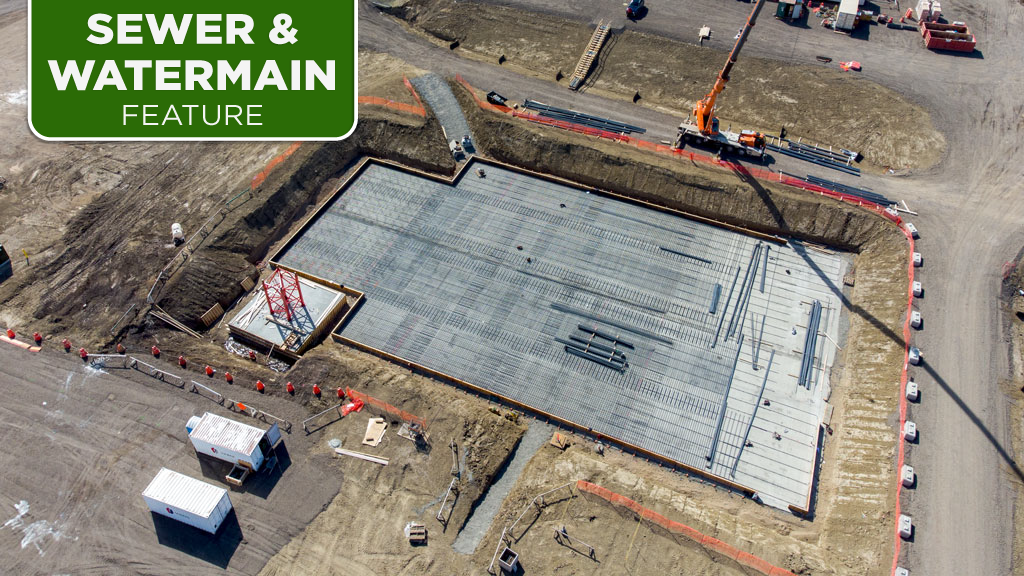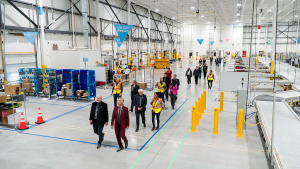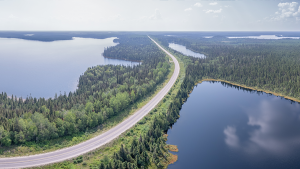To comply with updated Canadian environmental effluent water-quality requirements, the city of Lloydminster is in the process of building a new wastewater treatment facility.
The project is now (fall 2022) more than two-thirds complete.
Terry Burton, Lloydminster’s director of planning and engineering, says the new facility will be commissioned in late 2023 and is expected to be fully operational by December 2023.
The city of 31,000, which straddles the Alberta-Saskatchewan border, constructed the original facility in 1983.
Since that time, it has made minor upgrades to the system, including a new aeration system in 2007-8, coarse inlet screens in 2010 and new aeration blowers in 2012.
By 2017, the City realized the system had reached the end of its fully-functioning life and could no longer be updated to meet present-day federal and provincial regulations.
The original aerated lagoons were unable to meet either their original design effluent limits or the current wastewater systems effluent regulations limits.
To make the best use of the infrastructure that is already there, the original treatment plant will be incorporated into the new one.
The design of the new treatment facility will reuse the existing headworks, aeration blowers and lagoon cells.
“The new treatment plant will be designed to accommodate the city’s growth projections until 2041,” said Burton. “It is also strategically placed on the existing site so that any addition, expansion or upgrade can make use of the area lying to the south on the same site to accommodate a further 20 years of service.”
The City expects construction of the new plant will have significant social and environmental benefits not only for Lloydminster, but also for the downstream cities, towns, villages and Indigenous communities that rely on the North Saskatchewan River for drinking water and recreation.

Planning for the new facility began in earnest in January 2020 when all the project vendors came together to familiarize themselves with the new treatment plant’s Integrated Project Delivery (IPD) model and to form a project management team.
Lloydminster decided to use IPD so it could get the best value for its money spent, says Burton.
“The City has a fixed budget that cannot be exceeded,” he said.
The validation phase of the project allowed the entire IPD team – owner, consultant, contractor and anyone else who was involved in the project – to consider all of its options, and then make their decisions based on what was the best value.
“Using IPD made for certainty without having to design and tender the project first,” said Burton. “Procuring the water treatment project with that model has certainly been successful for Lloydminster.”
It was because of the flexibility of the IPD model, says Burton, that one of the partners, a vendor of waste treatment membrane bioreactors, was able to exercise some initiative and present an updated version of a membrane to the other members of the project team for their consideration.
“The vendor had been working on an updated version of the membrane and had just released it,” said Burton. “Fortunately for the project, it turned out to be better value than the original one.”
The new facility uses “tried and true treatment technology, not leading- or bleeding-edge.”“We want to make sure it actually works before we install it,” said Burton.
The new treatment membranes in the Lloydminster facility will require less air to treat the effluent, which will reduce the total operating costs.
“The reduction is not sizable, but it will still be enough to benefit the operation of the facility,” said Burton.
Furthermore, the use of different materials in the construction of the membrane cassettes is expected to extend the life of the membranes from 10-12 years to 15-20 years.
The project faced two major challenges, one of which was expected and the other which was not.
First, in order to work around the cold and snowy conditions that prevail on the prairies for almost half of the year, the project scheduled as much of its outdoor work for spring, summer and fall, and the indoor work for the winter.
“Our other challenge, which we couldn’t anticipate, was supply chain problems caused by the COVID-19 pandemic,” said Burton. “It has delayed delivery of parts, which come from all over the world. Nevertheless, we’re still on track to be finished by the end of next year.”











Recent Comments
comments for this post are closed